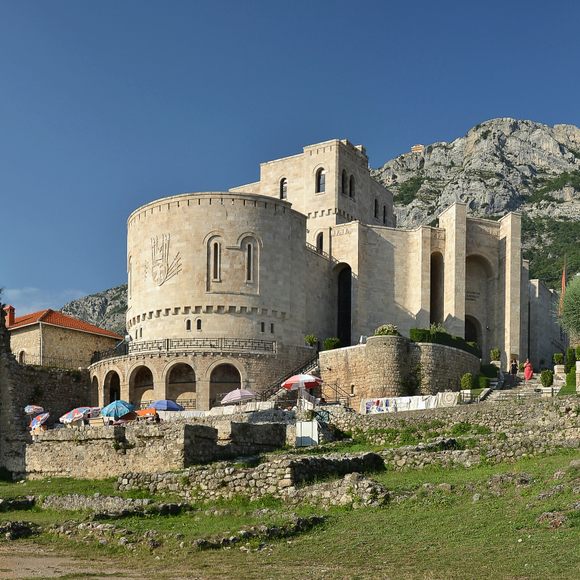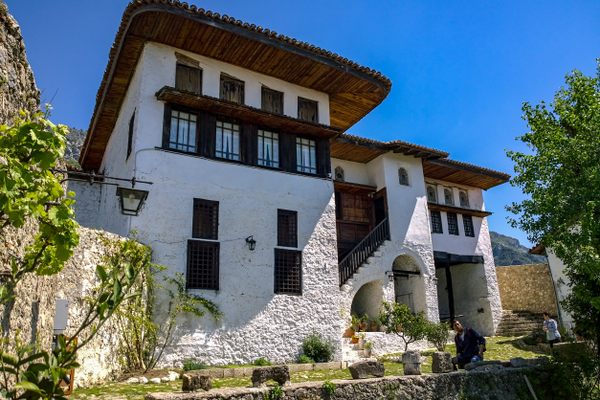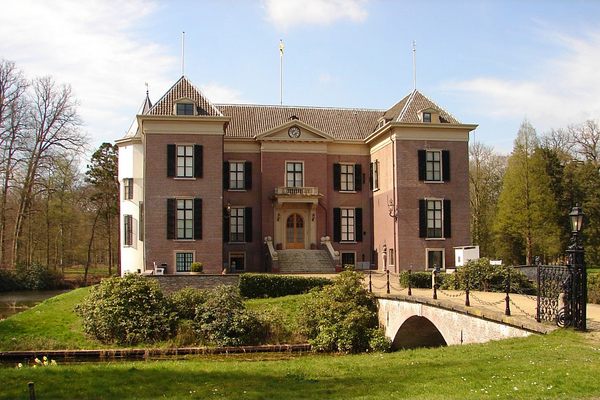Krujë Castle
The elliptical citadel resisted the advance of the mighty Ottomans several times, thanks to the military prowess of the "Dragon of Albania."
When the powerful Ottoman empire was slowly taking over several parts of Europe during the 15th century, one small medieval castle in Albania remained out of its reach.
Krujë castle was built in the 5th or 6th century, perched above the city of the same name. At the time of the Ottoman threat, it was the headquarters of Gjergj Kastrioti, the “Dragon of Albania,” an Albanian nobleman and military commander. Kastrioti was sent as a hostage to the Ottoman court early in his life, and after leaving service, led a rebellion against the Ottoman Empire in Albania.
Under his command, the elliptical castle, defended by a small army usually no larger than 3,000 men, fought off multiple massive sieges from the Turks, beginning in 1444. Ottoman forces who conquered large areas like Constantinople and the Balkans could not break the castle’s defences.
Kastrioti’s military skills presented a major obstacle to Ottoman expansion into Western Europe. The Ottoman Turks gave him the name Iskender bey, meaning “Lord Alexander” or “Leader Alexander” (which has been translated as Skanderbeg in English), believed to be no less than a comparison to Alexander the Great.
The Albanian stronghold finally fell, ten years after the “dragon’s” death in 1468, and was taken over by the Ottoman ruler Sultan Mehmed II.
The castle now contains a museum dedicated to this legendary Albanian leader. The exhibits of have been arranged in a way that chronicles Skanderbeg’s life and military achievements, one of the proudest periods of Albanian history. An important display is the replica of the Arms of Skanderbeg: his famous goat head-topped helmet and sword.
In front of the museum are the remains of an Ottoman-era mosque and its minaret, Sultan Mehmed Fatih mosque, named after the man who finally broke down the castle’s security.
A traditional home in the castle complex, below the Skanderbeg Museum, houses the Ethnographic Museum. The museum is located in an original 19th century house that belonged to the wealthy Toptani family. It shows the level of self-sufficiency the household maintained by producing its own food, drink and household artifacts. The home’s luxury is well presented with the walls lined with frescoes, intricately carved woodwork, colourfully painted furniture and the house’s own mini Turkish bath (hammam).
On the road to leading up to the castle stands a section of a 450-year-old bazaar, that in its heyday, saw more than 150 merchants selling their goods to the castle’s visitors and residents. It now sells traditional crafts and antiques.
Know Before You Go
Krujë is a city perched on a mountainside therefore it is suitable for drivers experienced in driving using handbrakes and on narrow serpentine roads.



























Follow us on Twitter to get the latest on the world's hidden wonders.
Like us on Facebook to get the latest on the world's hidden wonders.
Follow us on Twitter Like us on Facebook